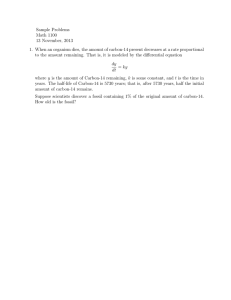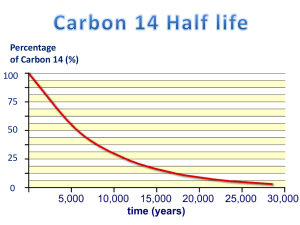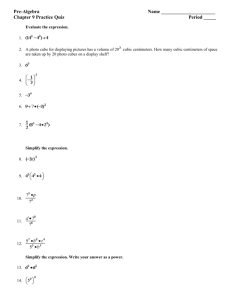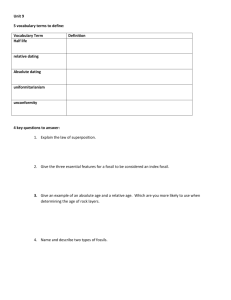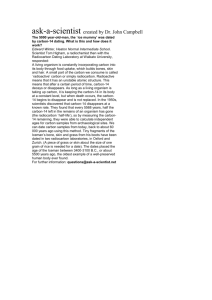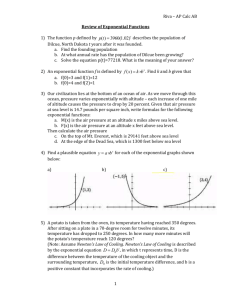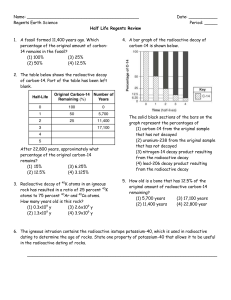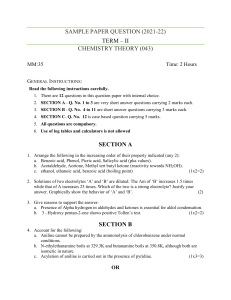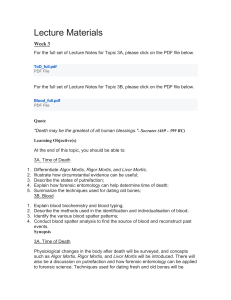1M01 Mathematical Methods 2010–11 Calculus tutorial exercise sheet 8
advertisement
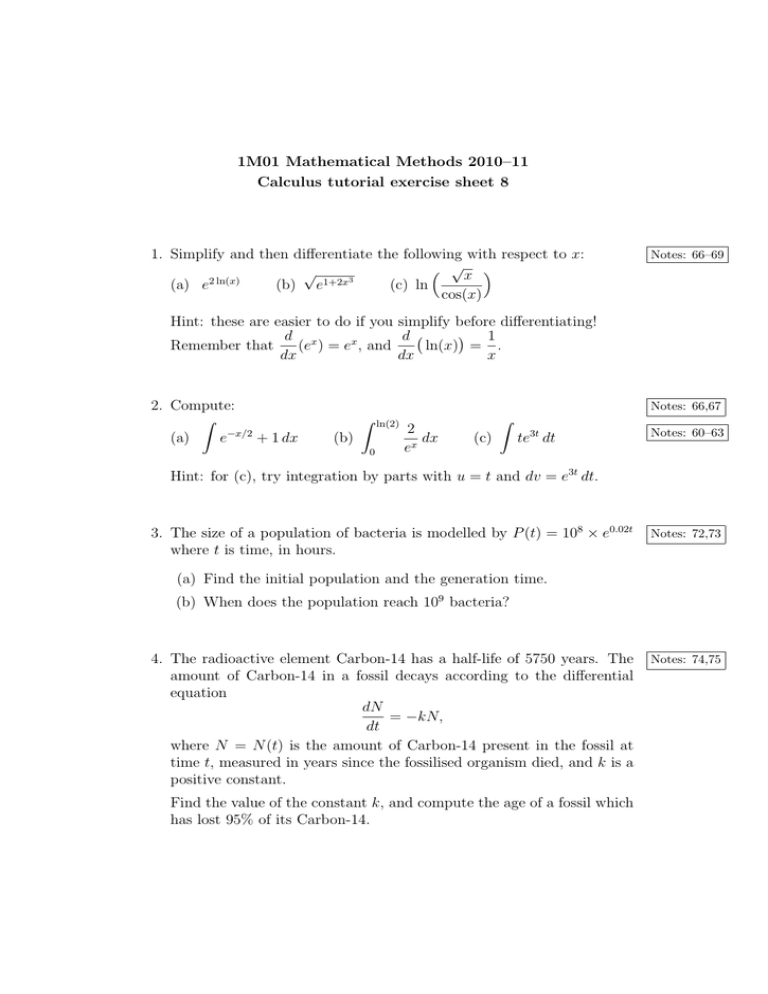
1M01 Mathematical Methods 2010–11 Calculus tutorial exercise sheet 8 1. Simplify and then differentiate the following with respect to x: √x √ 3 2 ln(x) 1+2x (a) e (b) e (c) ln cos(x) Notes: 66–69 Hint: these are easier to do if you simplify before differentiating! 1 d x d Remember that (e ) = ex , and ln(x) = . dx dx x 2. Compute: Z (a) e−x/2 + 1 dx Notes: 66,67 Z (b) 0 ln(2) 2 dx ex Z (c) te3t dt Notes: 60–63 Hint: for (c), try integration by parts with u = t and dv = e3t dt. 3. The size of a population of bacteria is modelled by P (t) = 108 × e0.02t where t is time, in hours. Notes: 72,73 (a) Find the initial population and the generation time. (b) When does the population reach 109 bacteria? 4. The radioactive element Carbon-14 has a half-life of 5750 years. The amount of Carbon-14 in a fossil decays according to the differential equation dN = −kN, dt where N = N (t) is the amount of Carbon-14 present in the fossil at time t, measured in years since the fossilised organism died, and k is a positive constant. Find the value of the constant k, and compute the age of a fossil which has lost 95% of its Carbon-14. Notes: 74,75
